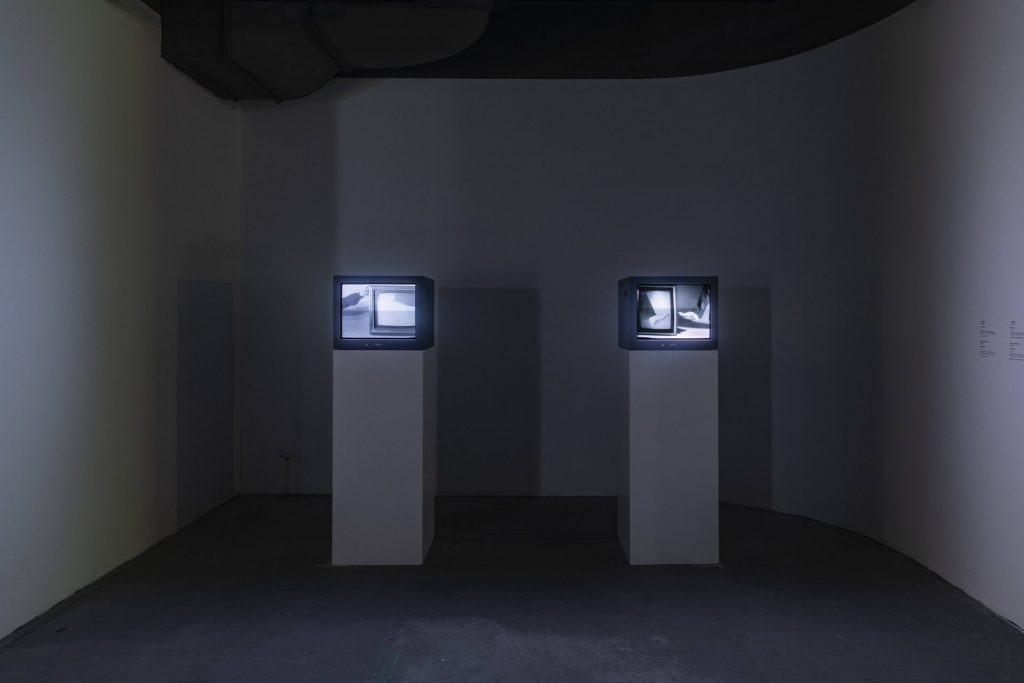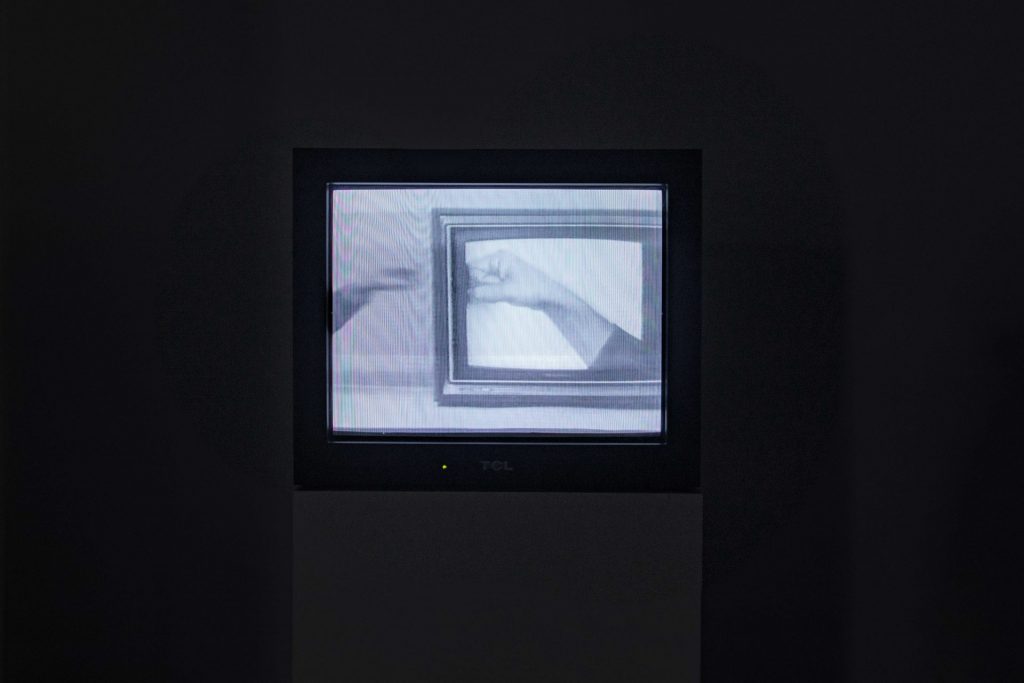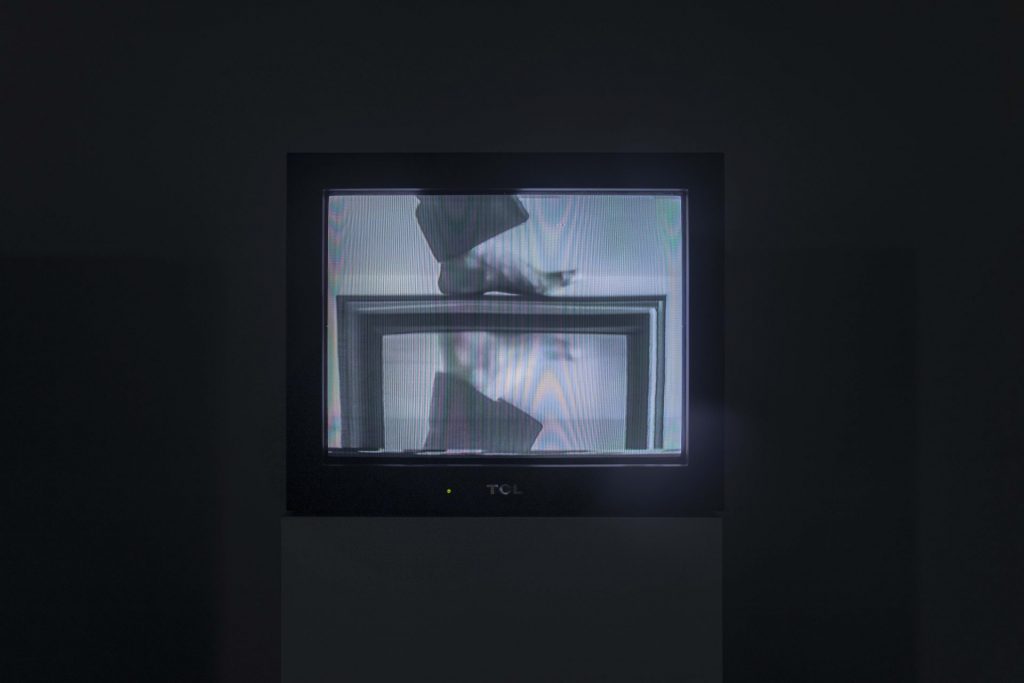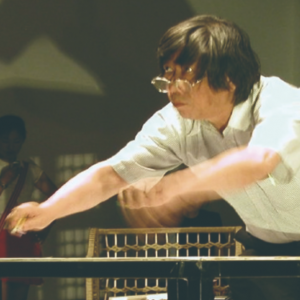Hand No.2, 1976 and Foot No.3, 1977
single-channel video installation

Keigo Yamamoto, Hand No.2, 1976 (left) and Foot No.3, 1977 (right), Installation view, OCAT Shanghai, 2020.
Image courtesy of OCAT Shanghai.

Keigo Yamamoto, Hand No.2, 1976. Installation view, OCAT Shanghai, 2020.
Image courtesy of OCAT Shanghai.

Keigo Yamamoto, Foot No.3, 1977. Installation view, OCAT Shanghai, 2020.
Image courtesy of OCAT Shanghai.
Keigo Yamamoto contemplated the physicality of the monitor and the extension of the body through the immediate play back capability of video and CCTV monitor in his works Hand No.2 (1976) and Foot No.3 (1977). The works record interaction between the isolated body part – the hand or foot – with the monitor as the framing device of the video. The first interaction between hand and monitor is recorded, then played on the monitor and filmed again with a response to the earlier recording. What we see in Hand No. 2 is the same hand recorded and re-recorded locating the hand and forearm in separate but connected realms of representation. The same principle is explored in Foot No.3. A representation of a representation of a monitor within a representation of a monitor within a monitor. Layers of representation extend the body from the inner image of the monitor to the outer limits of the existing monitor on the plinth before us. Viewing this work in the exhibition it is possible to physically touch the monitor and in turn directly connect to become part of the art work and it is with this possibility the monitor and the space it occupies is ‘live’. (Text / Kim Machan)

Image courtesy of the artist and Japan Media Arts Festival Archive
Keigo Yamamoto
1936, Fukui, Japan
Born in Fukui, Japan in 1936, Keigo Yamamoto is a Japanese media artist who started producing video art from 1968. As an original member of the video artists’ collective Video Hiroba, he made significant contributions to the first wave of experimentation with video in Japan. He was a key figure leading the ‘network art’ movement in the 1970s, a new art that brought about encounters between different cultures in the fusion of computers, sound and telecommunication. His work in video art led him to establish the Fukui International Video Biennale in 1985 that continued until 1999. Yamamoto regularly exhibited in many significant international exhibitions and as an educator has nurtured younger generations of artists. From 1988, he was a professor at Musashino Art University, and later became a professor and the director of the Film and Media Research Center, at Kyoto Seika University in 2000. In 2014 he was awarded the Japan Media Arts Festival Achievement Award for his lifetime contribution to media arts and education in Japan.

